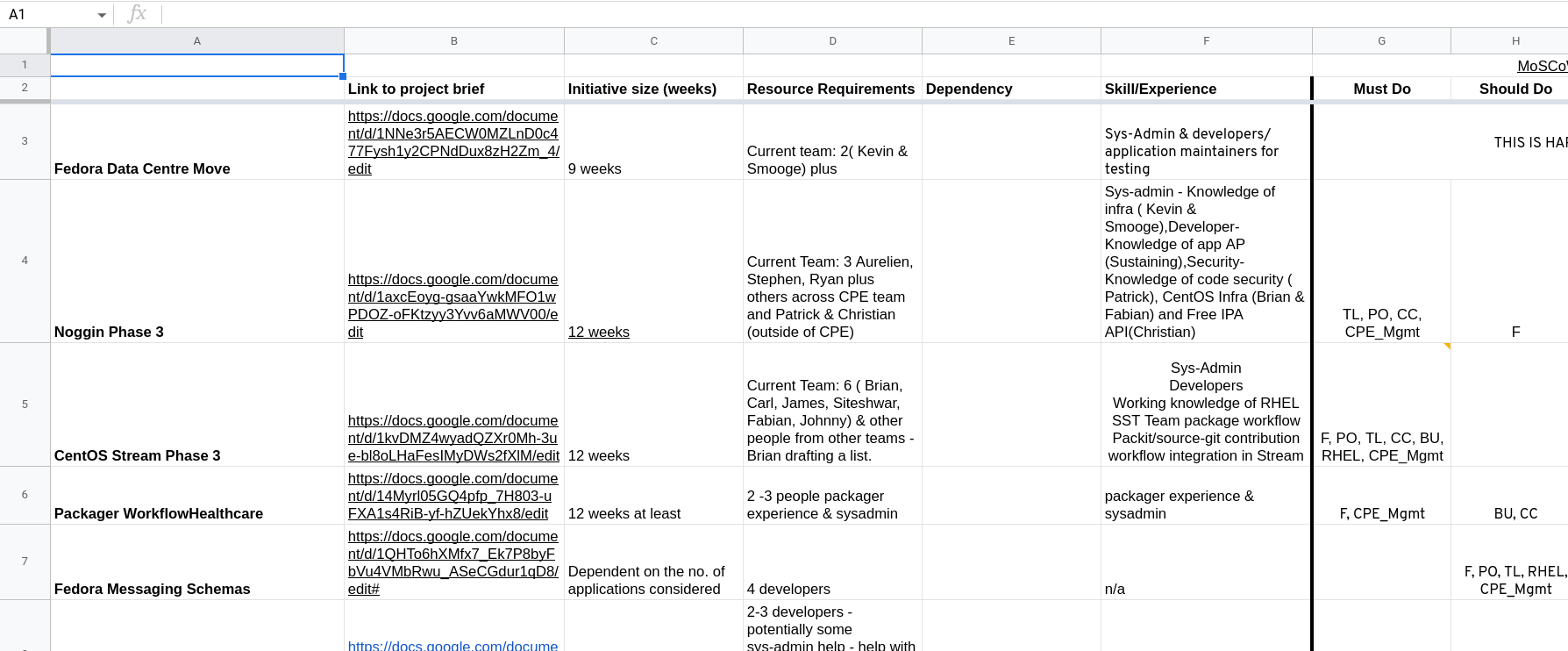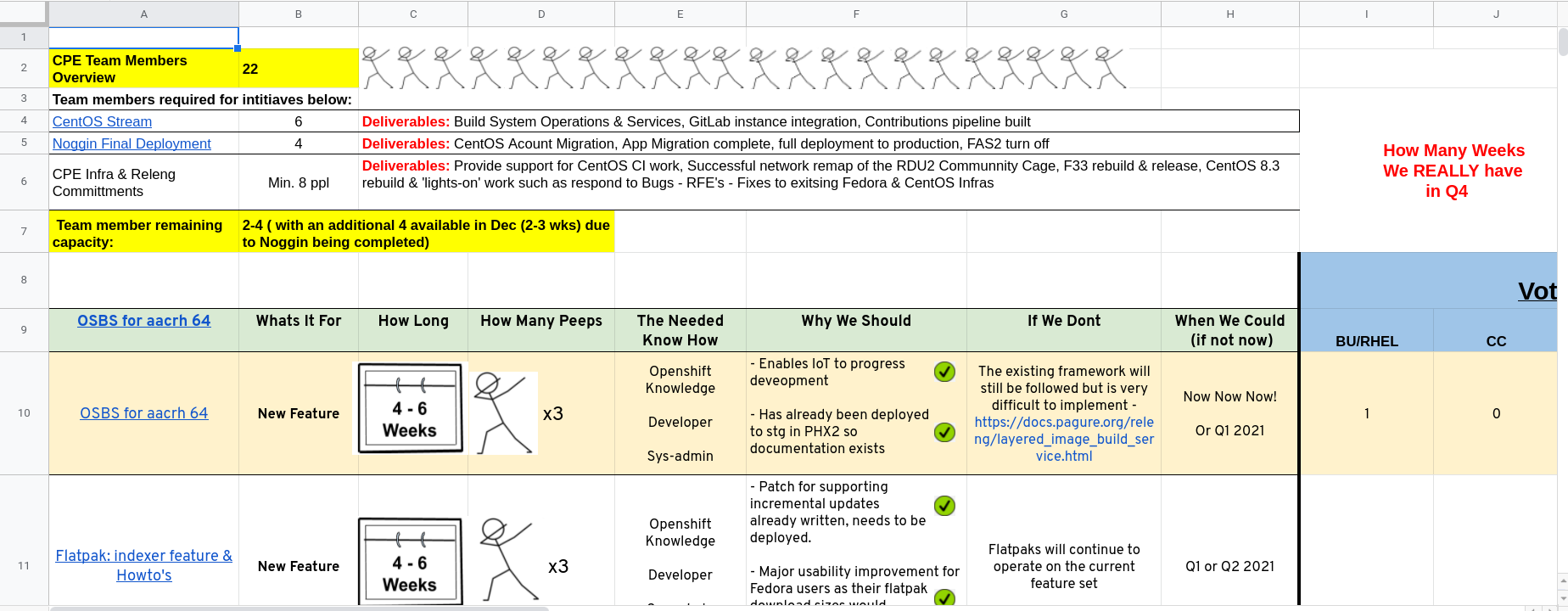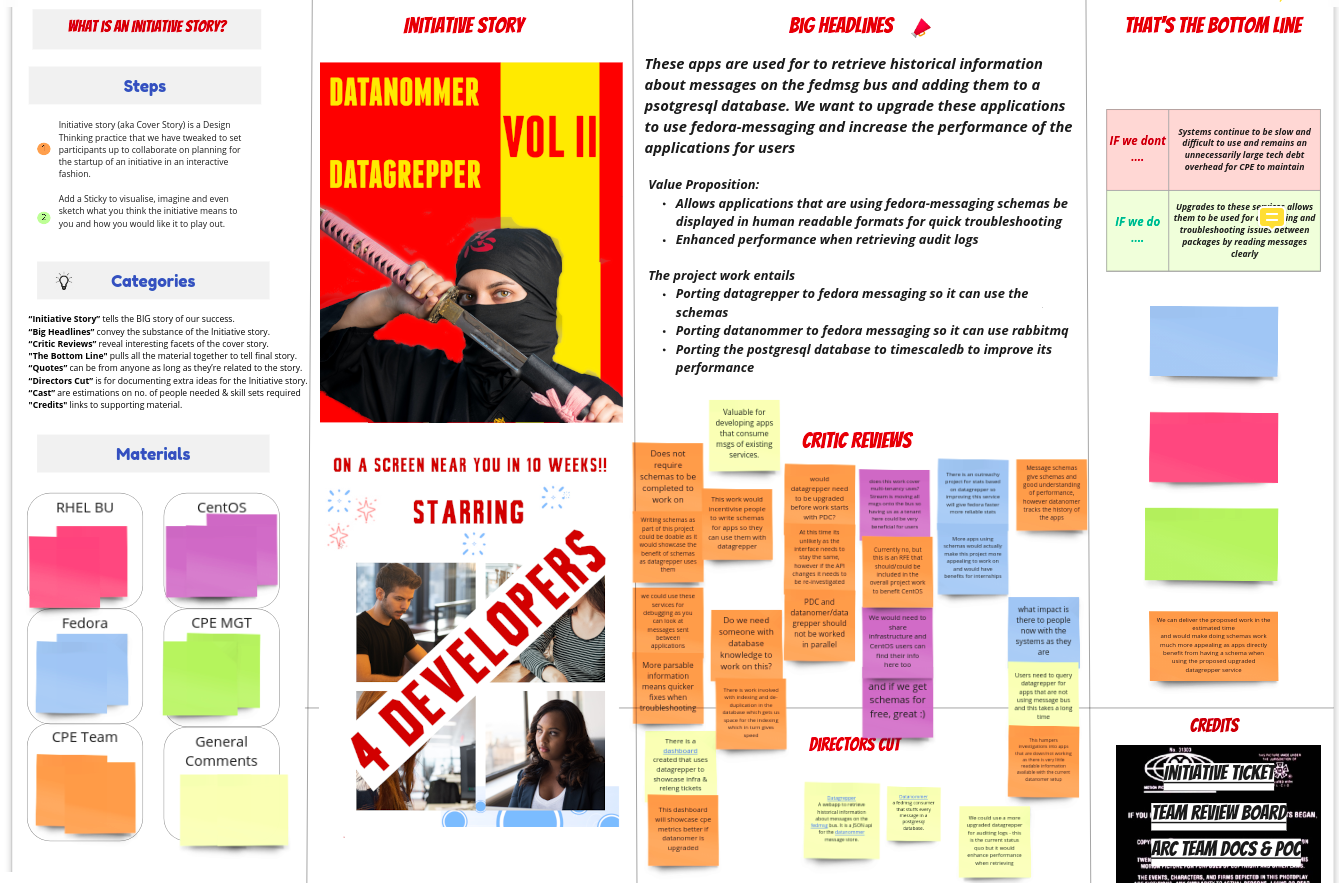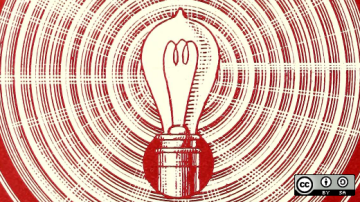For the past several years, Design Thinking has been providing a way to enhance problem solving within teams, to ensure learning goals are met, and to increase team engagement. In our previous article, we discussed the problem with processes. In this article, we're going to describe how we made work more engaging.
The problem with engagement
We reached a point in our planning that we were able to articulate information about the upcoming pieces of work our team could take on. We solicited feedback from various stakeholders that represented different viewpoints, but we had no way to converse about the work properly to one another. It was all a one-way information exchange, with presentations and slides being spoken to a group of people, but not with a group of people. Worse still, it took hours to convey information.
The whole scenario felt forced and devoid of personality. Why would anyone want to take part, let alone enjoy, any aspect of our project? It was just another meeting in a cascade of meetings, during which most people probably did something else, while being talked at.
Something had to change, so we turned to Design Thinking to drum up some thoughts on how we could improve our process.
Design Thinking and Agile practices often advertise themselves as wonderful team and relationship building concepts. They can be, but as a team we had concentrated on the mechanics of Agile, and ended up with stiff, formal events that certainly got the job done, but curtailed any chance of creativity and natural conversation. After two quarterly planning cycles operating under our version of the "letter of the Agile Law" we knew there was a problem, and we wanted to fix it. Our next challenge was finding the right "fit".
We began by looking at our quarterly planning call itself. We asked ourselves whether this was really the best experience we could offer attendees of our quarterly planning events? These calls relied on participation and engagement from all parties to really make them a valuable tool to guide decisions. First and foremost, we wanted to get that without having to explain a massive shift in our way of doing things, or drowning people with explanations on our new methods. We decided to look through the lens of Design Thinking by putting the needs of our end users (the attendees of our calls) first. We asked ourselves: Were we in their position, would we come away from those calls feeling like we were involved in the decision making, or even that we enjoyed attending them? In short, the answer was no, we didn't believe we would.
[ Related read: 7 tips for giving and receiving better feedback ]
It was time to ask our attendees for some feedback on what they felt about how the sessions were being delivered, what value they derived from them. As is often the case when you ask questions like that, we didn't always get a great amount of feedback, or the feedback that we did get was vague. So we decided to make small incremental changes to our planning calls in an effort to increase engagement and to enable meaningful discussions. We would then garner feedback on these tweaks, and gauge the appetite for larger changes from our attendees as we progressed.
Incremental changes
First, we decided to change how we were demonstrating resourcing limitations per project to our stakeholders by reminding them that these projects all required real people, and weren't just numbers. Now we really did keep it simple here. In fact, all we did was add in some stick figures (dabbing, of course) that represented each team member so that people on the planning call could see exactly how many people each project needed. It was an instant hit.
Our stakeholders quickly appreciated something a little different to look at and it generated friendly, light conversation between participants. People were trying to guess which stick figure looked like who on the team (spoiler: they were all the same). After seeing how something so simple could instantly spark conversation, and even add a little fun into our calls, we knew we were on the right track. Time to make some real changes.
A picture is worth a thousand words, and at this point all we'd used were some stick figures. However, you can see how making a couple of small, simple changes can generate a positive impact.

(Leigh Griffin, CC BY-SA 4.0)
You take a functional, but also kind of dull spreadsheet, add a bit of color, graphics, and a sprinkle of actual human language, and you end up with the kind of meeting that stands out amongst all of the others in people's calendars. This one is a little special. This one has a little bit more to it. Like the latest blockbuster movie that has people talking about it for days, this meeting ensures it has your full attention, and has you looking forward to seeing what happens in the sequels!

(Leigh Griffin, CC BY-SA 4.0)
Movie posters
So the stick figures worked, uncomplicated language worked, the visuals worked. How could we build on this for an even better experience? The answer was closer at hand than we'd expected. One of our team members had some success using techniques and practices from the fantastic resource that is the Open Practice Library. We mentioned this free, community-built online resource in our first article. It was here we found the concept of a News Headlines, also known as Cover Stories, in which a project is broken down into key points, and is written in the style of a newspaper or magazine.
In one of the many brainstorming sessions we had reviewing the feedback, we landed on the idea of using movie posters for our cover stories. OK, truth be told we might have also been talking about the Oscars at the time, but it was a lightbulb moment and it instantly felt right. The creativity started flowing, and we began forming our project's movie posters for their upcoming "premiere" in the next quarterly planning call. The result? Uma Thurman in Kill Bill Vol. 2 capturing all you needed to know about upgrading two applications that run services based on status messages sent through other applications hooked into a larger database, critical for troubleshooting outages and performance issues. Obviously!

(Leigh Griffin, CC BY-SA 4.0)
Here was a way to be creative in how our potential projects could be discussed and shared with our stakeholders, while still capturing all the key pieces of information. They still got the details about the work they would need to do, so they could form an opinion and reach a decision on what work holds the most value, and what deserves their time and resources. However, we wanted our team to have its own version of these cover stories, something that might resonate more with the people in our team.
In our next article, we'll talk about all the lessons we learned along the way.












Comments are closed.